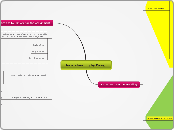Understanding by Design
Six Facets of Understanding
Can EXPLAIN:
provide thorough, supported, and justifiable accounts of phenomena, facts and data.
This is a knowledge of "how" and "why" rather than a recall of information.
These are inferences that are tied to specfic evidence which will show logical, insightful connections.
This is to show something in relationship to other things.
Example Essential Questions:
What are the causes?
What are the consequences?
This question forces the student to evaluate the implications.
What are the connections?
Verbs that show "Explanation"
Support
Justify
Generalize
Predict
Verify
Prove
Substantiate
Can INTERPRET:
Ways to Show Interpretations
Tell meaningful stories (narratives)
The meanings and patterns we ascribe to all events, data, or experiences transform our understanding and perception of particular facts.
The story behind it all.
offer apt translations
Provide a revealing, historical or personal dimension to ideas and events.
Make it personal or accessible through:
Images
anecdotes
analogies
models
Example Essential Questions:
What does it mean?
Why does it matter?
What does it illustrate or illuminate in human experience?
What “sense” does it make?
Characteristics of Interpretations
Bound by the personal, social, cultural, and historical context in which they arise
Framed by our experiences
Have SELF-KNOWLEDGE:
perceive the personal style, prejudice, projections and habits of mind that both shape and impede our own understanding (metacognition - understanding the way we think).
We are aware of what we do not understand.
Subtopic
Example Essential Questions:
How does who I am shaped my views?
What are the limits of my understanding?
What are my blind spots?
What am I prone to misunderstand because of prejudice, habit, and style?
How do I learn best?
Metacognition
self-knowledge about how we think and why
The wisdom to know one’s ignorance and how one’s patterns of thought and action inform as well as prejudice understanding.
the relation between our preferred methods of learning in our understanding (or lack of it).
The immature mind is thus not merely ignorant or unskilled, but unreflective.
Have PERSPECTIVE:
demands critical and insightful points of view
Example Essential Questions:
From whose point of view?
What is assumed or at a tacit level that needs to be made explicit?
Is there adequate evidence?
Is the evidence reasonable?
What are the strengths and weaknesses of the idea?
What is a novel way to look at this?
This is an opportunity to confront new ideas.
exposed to alternative theories and diverse points of view regarding the “big ideas.”
develop the ability to critically analyze the various points of views found in text and in discussions.
Can APPLY:
effectively use and adapt what we know in diverse contexts (transfer of learning)
Refer to the activity where the class had to decide how to attack the castle and shortly afterwards, were tasked to figuring out how to operate on a brain tumor.
Must involve real-world problems
Example Essential Questions:
How and where can we apply this knowledge, skill, process?
How can my thinking and action be modified to meet the demands of this particular situation?
Can EMPATHIZE:
find value in what others might find odd, alien, or implausible.
Example Essential Questions:
How does it seem to you?
What do they see that I don’t?
What do I need to experience a time to understand?
For this facet, it requires students to challenge their assumptions and have an open-mind.
They need to see how unusual ideas can be rich once they overcome their habitual assumptions.
Students need to learn how to open-mindedly embrace ideas, experiences, and text that might seem strange, are difficult to understand.
Intellectual empathy is essential if we are to make sense of ideas that we might quickly reject because of our own assumptions.
Articles to Explore for the Assignment
Revisiting the Cone of Learning: Is it a Reliable
Way To Link Instruction with Knowledge Recall.
Explanation
Interpretation
Self-Knowledge
Five Approaches to Collaborative Learning
Self-Knowledge
Perspective
Apply
Workplace Learning and Generation X.
Perspective
Apply
Empathize
